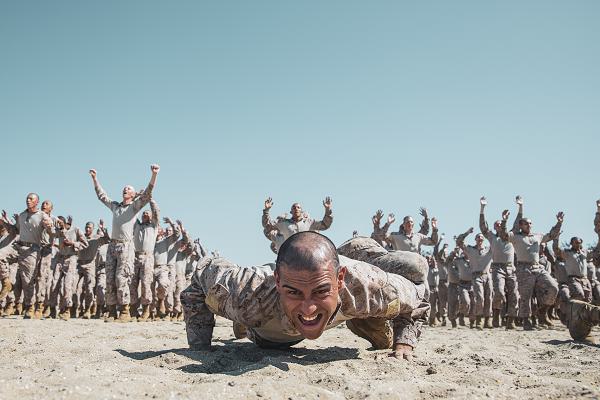
San Diego, California. (March 17, 2025): Most military recruits entering basic training never forget their introduction to the “front leaning rest” position, also known as the pushup. In this photo by Corporal Sarah M. Grawcock, a Marine recruit with 2nd Recruit Training Battalion is positioned in the classical front leaning “rest”. Recruits soon find themselves doing hundreds of pushups as a core part of their training, but why? Is this done as punishment for some offense or is there a serious military reason for so many pushups?
The answer yes, and yes.
Perhaps the oldest weight-bearing exercise known to man, the push-up, or variations of it, were used by soldiers and warriors as far back as the Roman Empire. It’s physical benefits are obvious. First, they are a simple and effective way to build upper body strength and endurance. Needing no equipment, the pushup develops strength and endurance in the chest, shoulders, triceps, and core. These muscles are essential for carrying equipment, engaging in combat, and performing various military tasks. Beyond the core muscles, pushups help improve posture, increase shoulder mobility, and they are a great full body workout. Additionally, pushups are an excellent tool to assess a warfighter’s physical fitness and readiness for combat.
On the disciplinary side, nothing gets a recruit’s attention faster than having to get down and “push the planet” away a couple dozen times. Incorporating pushups into an intense training regime adds stress and challenges the mental endurance of recruits. It is also a disciplinary tool to underscore corrective actions to help prevent repeated mistakes. When a drill instructor barks “drop and give me twenty,” troops quickly learn to react instinctively to command, another essential to success in combat.
As far back as ancient Rome, troops have found themselves in the “front leaning rest” position as punishment and to maintain excellent physical conditioning.


